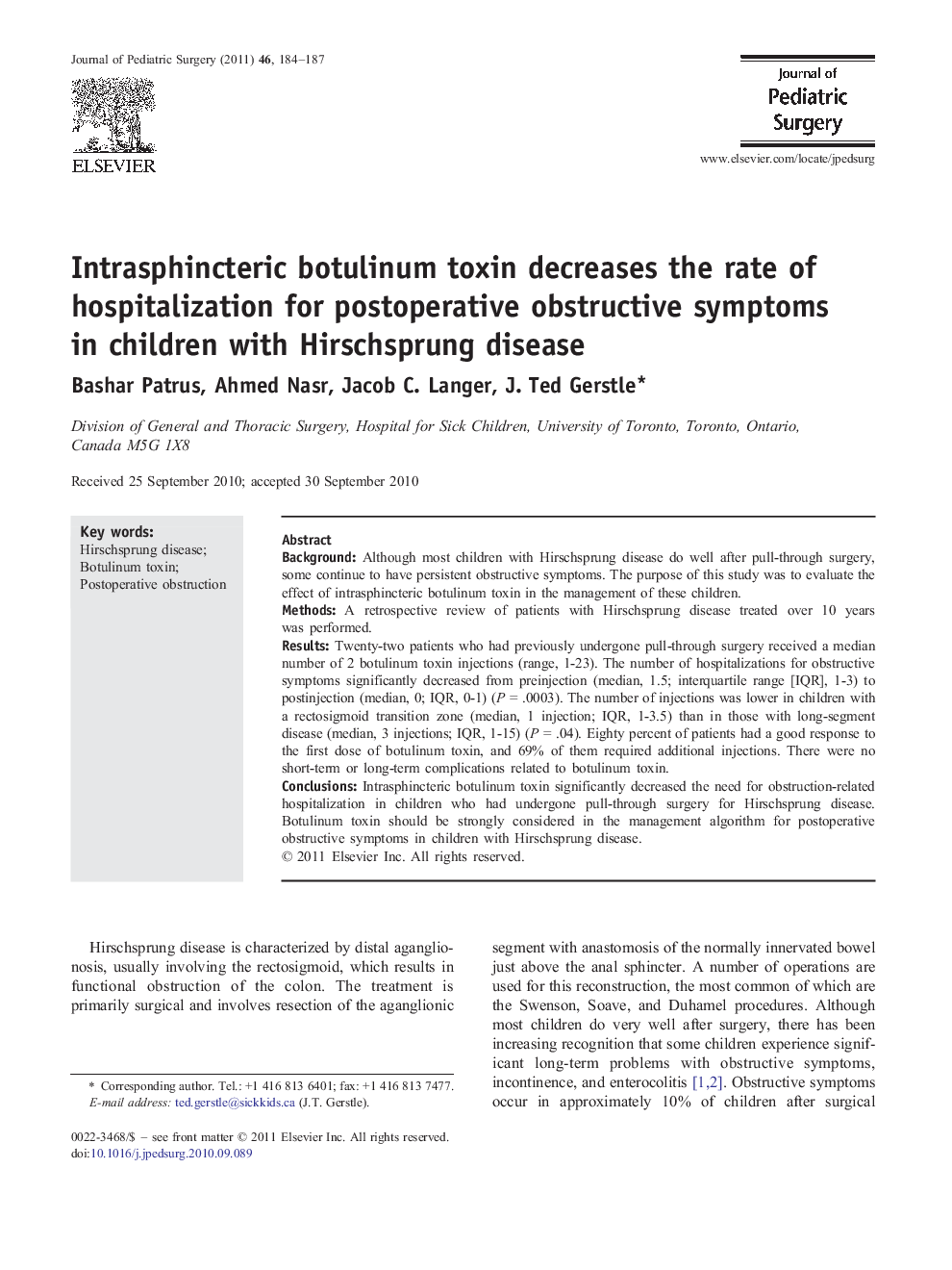| Article ID | Journal | Published Year | Pages | File Type |
|---|---|---|---|---|
| 4157962 | Journal of Pediatric Surgery | 2011 | 4 Pages |
BackgroundAlthough most children with Hirschsprung disease do well after pull-through surgery, some continue to have persistent obstructive symptoms. The purpose of this study was to evaluate the effect of intrasphincteric botulinum toxin in the management of these children.MethodsA retrospective review of patients with Hirschsprung disease treated over 10 years was performed.ResultsTwenty-two patients who had previously undergone pull-through surgery received a median number of 2 botulinum toxin injections (range, 1-23). The number of hospitalizations for obstructive symptoms significantly decreased from preinjection (median, 1.5; interquartile range [IQR], 1-3) to postinjection (median, 0; IQR, 0-1) (P = .0003). The number of injections was lower in children with a rectosigmoid transition zone (median, 1 injection; IQR, 1-3.5) than in those with long-segment disease (median, 3 injections; IQR, 1-15) (P = .04). Eighty percent of patients had a good response to the first dose of botulinum toxin, and 69% of them required additional injections. There were no short-term or long-term complications related to botulinum toxin.ConclusionsIntrasphincteric botulinum toxin significantly decreased the need for obstruction-related hospitalization in children who had undergone pull-through surgery for Hirschsprung disease. Botulinum toxin should be strongly considered in the management algorithm for postoperative obstructive symptoms in children with Hirschsprung disease.
